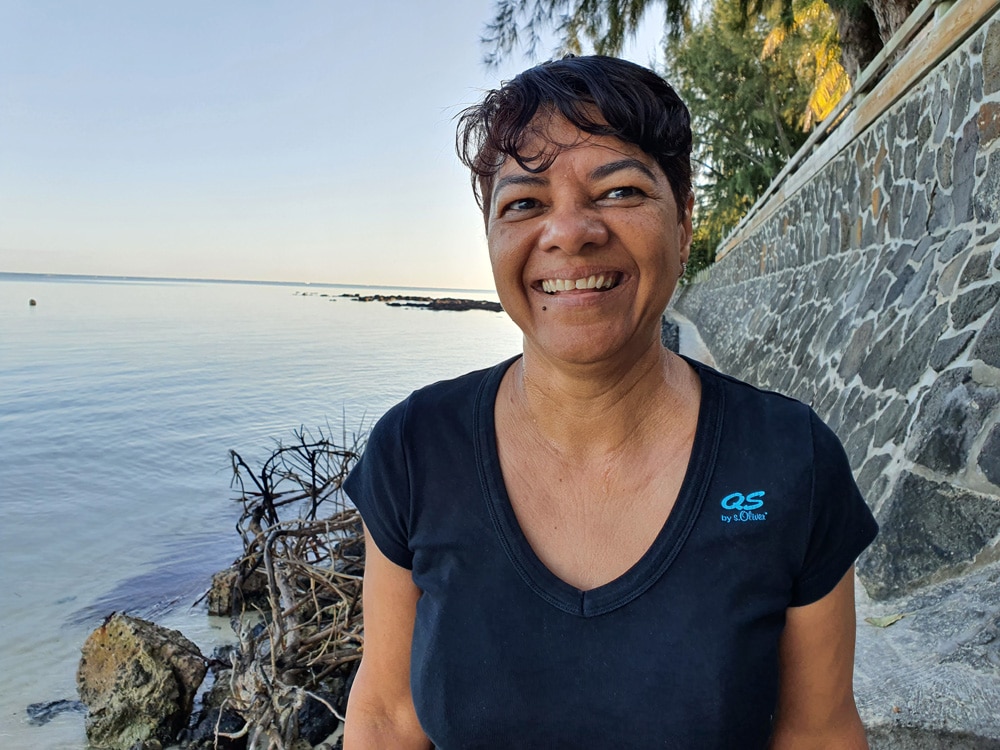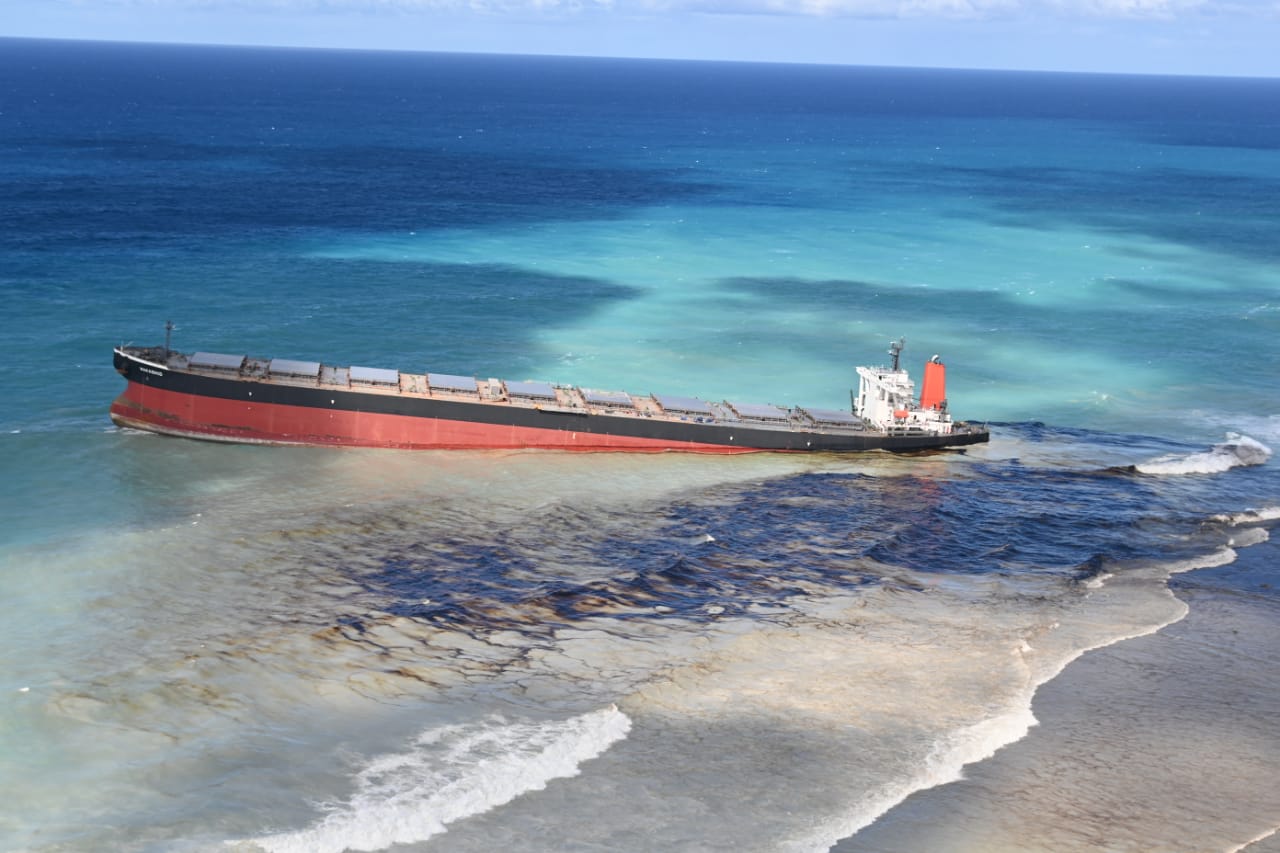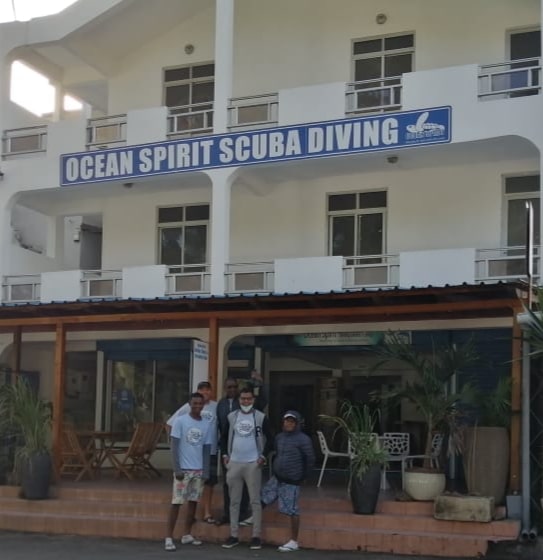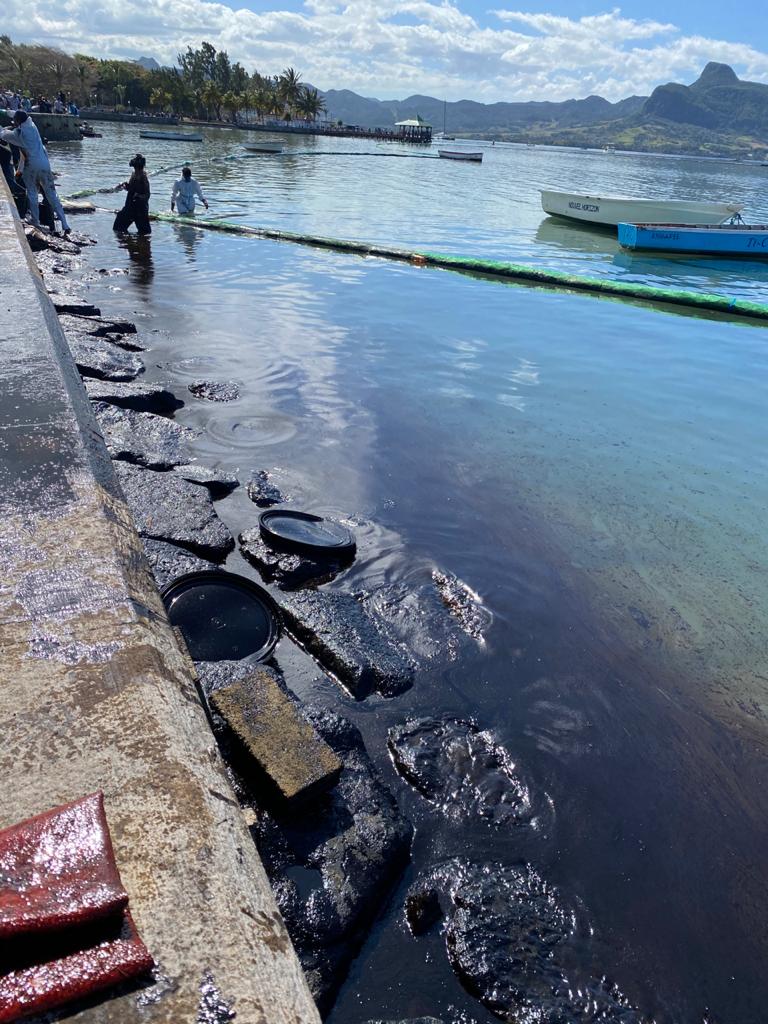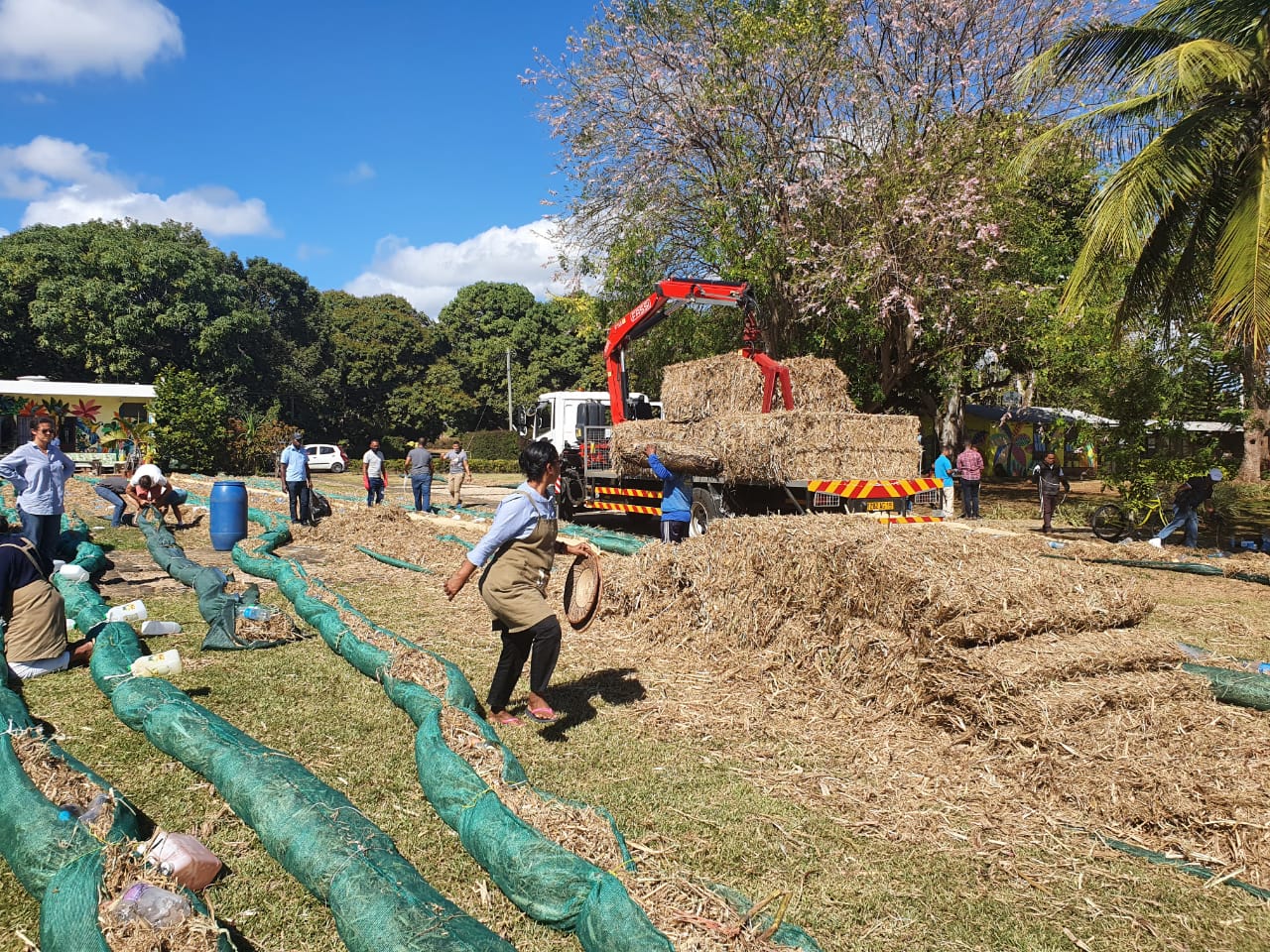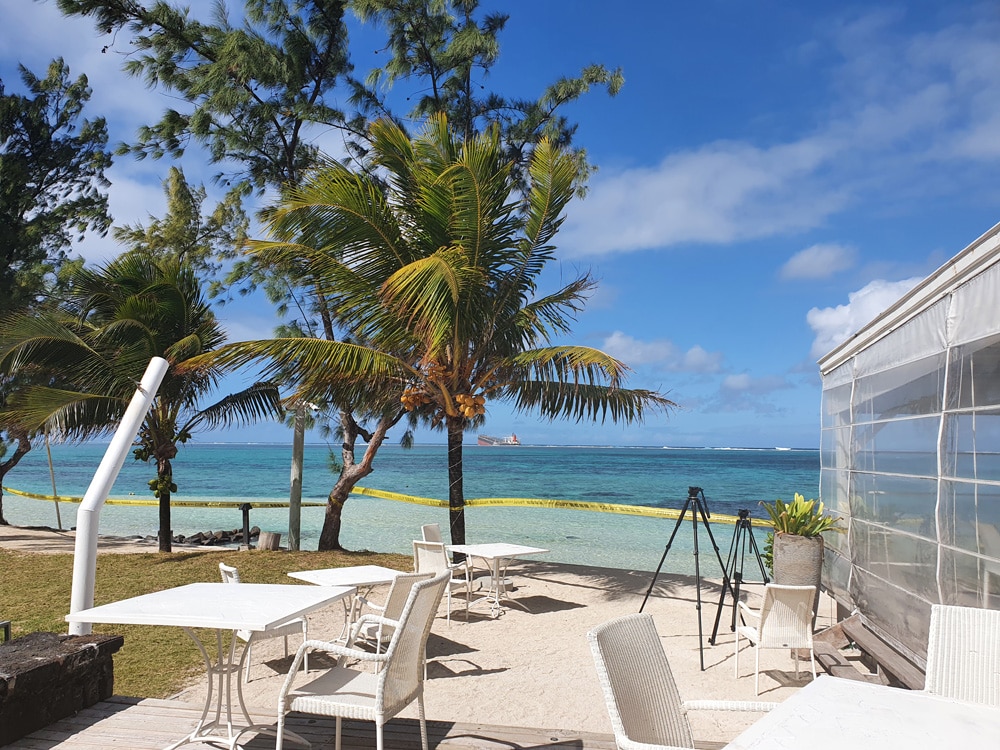Marine Life & Conservation Blogs
The Wakashio Oil Spill in Mauritius – a report from Jill Holloway
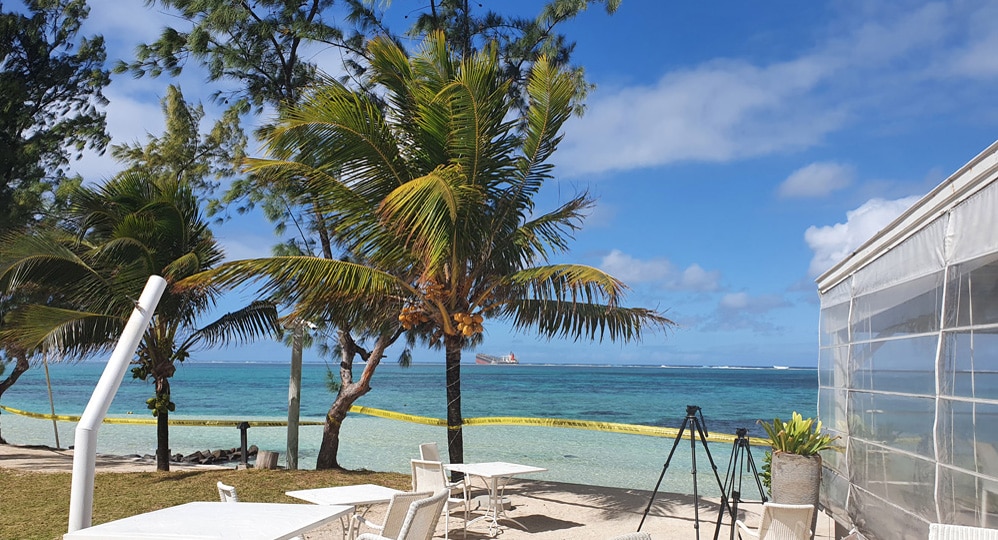
When a woman cuts her hair to save her Island you know it’s got to be a really special place. Two women that I know have both made this sacrifice.
Monica could sit on her hair. Now its gone into the bales to soak up oil. Hair absorbs eight time its weight in oil, and when there are potentially 4000 tons about to pour onto your coastline, sometimes it’s the only thing you can do to help. All over Mauritius women have been cutting their hair to contribute to the sugar can trash and bagasse being packed into home -made floating barricades to contain the catastrophic effects of bunker oil pouring from the hull of the Wakashio.
The WAKASHIO is a 200,000 ton bulk carrier 300 meters long. It is registered in Panama. Built in 2007 it is the responsibility of Nagashiki Shipping of Japan. It’s a 21st Century ship with ultra modern technology. No way should it hit the reef. And it was 200 nautical miles off course from Singapore to Brazil. (https://www.fleetmon.com/maritime-news/2020/30533/major-oil-spill-mauritius-island/)
This 300 metre bulk carrier ship was mysteriously run aground in the extreme south of Mauritius on the reef at Point Desney listed under the Ramsar Convention on Wetlands of International Importance. I got a call from the Coast Guard who tell me when anything that may affect diving.
That will be an expensive salvage job for someone, who will do it? I asked. Marine salvage is big business, and the ship was huge, and salvage fees increase with the size and value of the ship. The salvage crew get a percentage of the value of the vessel, paid directly by the insurers.
No no Madame, the owners do not want anyone to salvage it. They will send a crew from Holland in about three weeks. This is a bulk carrier. At the end of 2 weeks the ship was still there, and the hull, trapped on the coral reef, breached and black noxious bunker oil began to out onto the reef. The oil spread incredibly quickly, and the Mauritian Government call for National Mobilization while our beautiful turquoise ocean turned black.
This video is cobbled together from the early images flashing around the island, while everyone panicked at the possibility that we would wake up with our beaches covered in oil. Team Ocean Spirit went down on Saturday and spent the entire day deploying bales. Kevin our Dive Centre Manager came back shaken and shocked.
It’s chaos he said. How do they expect to contain that mess with sugar cane, trash, women’s hair, and shade cloth? He said that the stink was horrific, that the oil sludge was toxic, and that the guys should not go down on Sunday but recover from the fumes.
Under the control of the Prime Minister of Mauritius, the MSDA (Mauritian Scuba Diving Association) NGO Reef Conservation, Business Mauritius, The Chemical Industry, NGO Wildlife Mauritius, the Beach Authority, and health officials Mauritius leaders met to strategize. The sugar industry offered cane trash and bagasse. Construction companies offered miles of shade cloth. Clothing manufacturers provided absorbent cotton fabric and the fishing industry supplied miles of fishing line. The Health officials provided masks and gloves, and the Eco Sud guys guided the teams on safe retrieval of the oil.
The local population did the rest. All over the island, people stitched bales and stuffed them with oil absorbent material. Small fishing boats carried the barrages out to the oil covered ocean.
Others went down to the affected areas to save the fish trapped in the oil coated mangroves. Ile Aigrettes was severely affected, and I have not been able to get there to look at the effect of the oil. Volunteers collected all the birds off the Island and brough them to safety.
On Monday I was asked to go to Resiglas the boat builders swimming pool manufacturers and septic tank builders who provided drums to store the oil. They had cut a styrene block to support one of the pumps and asked me to take it down to Mahebourg. I was dreading this and expected to see chaos and oil. Unbelievable within 2 days the bulk of the oil around Point Desney and Mahebourg had been contained, removed and clean barriers placed. The French had sent a ship, 2 planes full of pumping equipment, a team of pollution control specialists and drones and helicopters to identify spots in need of help.
Point Desney, deceptively clean and calm with Wakashio posing in the distance. While we cannot predict the full impact this has had on the corals, the ocean is now almost clean. Thanks to teamwork and a small amount to the ladies of Mauritius who shaved their heads.
- Words: Jill Holloway
- Copyright Ocean Spirit: www.osdiving.com
Marine Life & Conservation Blogs
Book Review: Shells of the World

Shells of the World: A Natural History by M.G. Harasewych
Shells of the world is a guide to the world of marine, shelled molluscs. And what a varied and interesting world it is. Some of my favourite things to find on a dive are detailed in this book, including disco clams (or Electric File Clams as they are correctly names), the cephalopods, giant clams and sea hares. There are also many on my wish list, top of which is the Nautilus.
Each chapter provides a detailed description of the species, along with beautiful images. You can dive deeper and discover where they live, both with global distribution and the habitat they prefer. Learn about their diet, reproduction and diversity.
Having dipped in and out of this lovely book over the past few weeks, it has inspired me to learn more about this group of animals that we see on most divers, wherever we are in the world. Some of the shells are incredibly intricate and beautiful. I have always agreed with never collecting, or touching, marine life. The description of a certain set of cone shells should be a warning to those that are happy to pick up marine life! One of the cone shells has a local name called the cigarette snail. Why? Because once the venom is in your system from this animal, you only have time to smoke one cigarette before the affects of the venom are fatal!
What the publisher says:
Mollusks are invertebrate animals with a remarkable natural history and a rich fossil record, and their shells are prized for their breathtaking variety and exquisite beauty. Shells of the World provides a wide-ranging look at the incredible diversity of marine mollusks. An informative introduction outlines the lineages covered, followed by a directory section, split into classes, that profiles a broad selection of different taxa to give a sense of their sheer numbers and variety.
- Features hundreds of beautiful color photos, depicting both the live animals and their shells
- Discusses mollusk evolution, anatomy, life cycles, behavior, and ecology
- Describes unique characteristics, distribution, habitat, and size
- Provides valuable insights into the conservation of the world’s marine mollusks
- Ideal for malacologists and shell collectors everywhere
About the Author:
M. G. Harasewych is research zoologist emeritus and former curator in the Department of Invertebrate Zoology at the Smithsonian Institution’s National Museum of Natural History. A fellow of the American Association for the Advancement of Science, he is the author (with Fabio Moretzsohn) of The Book of Shells: A Life-Size Guide to Identifying and Classifying Six Hundred Seashells.
Book Details
Publisher: Princeton University Press
Hardcover
Price: £25
ISBN: 9780691248271
Published: 9th April, 2024
Blogs
The Ocean Cleanup Breaks 10,000,000 KG Barrier

The Ocean Cleanup, the global non-profit project, has removed a verified all-time total of ten million kilograms (22 million lbs.) of trash from oceans and rivers around the world – approximately the same weight as the Eiffel Tower.
To complete its mission of ridding the oceans of plastic, The Ocean Cleanup uses a dual strategy: cleaning up the Great Pacific Garbage Patch (GPGP) to remove the plastic already afloat in the oceans, while stopping the flow of plastic from the world’s most polluting rivers.
Through cleaning operations in the GPGP and in rivers in eight countries, the cumulative total of trash removed has now surpassed ten million kilograms. This milestone demonstrates the acceleration of The Ocean Cleanup’s impact, while underlining the astonishing scale of the plastic pollution problem and the need for continued support and action.
While encouraging for the mission, this milestone is only a staging point: millions more tons of plastic still pollute our oceans and The Ocean Cleanup intends to continue learning, improving and innovating to solve this global catastrophe.
This announcement comes as governments from around the world meet to continue negotiations to develop a new legally binding instrument to end plastic pollution at INC4 in Ottawa, Canada. Representatives of The Ocean Cleanup will be in attendance and the organization will be urging decision-makers to collaborate towards a comprehensive and ambitious global treaty which addresses plastic at all stages of its life cycle and in all marine environments worldwide, including in areas beyond national jurisdiction.
It is encouraging to see that the need for remediation is reflected in the various options for potential treaty provisions. It is essential that the final treaty contains clear targets for the remediation of legacy plastic pollution, and reduction of riverine plastic emissions.
Tackling plastic pollution requires innovative and impactful solutions. The treaty should therefore incentivize the innovation ecosystem by fostering innovations that make maximal use of data, technology and scientific knowledge – such as those designed and deployed by The Ocean Cleanup.
‘After many tough years of trial and error, it’s amazing to see our work is starting to pay off – and I am proud of the team who has brought us to this point.’ said Boyan Slat, Founder and CEO of The Ocean Cleanup. ‘While we still have a long way to go, our recent successes fill us with renewed confidence that the oceans can be cleaned.’
The Ocean Cleanup was founded in 2013 and captured its first plastic in 2019, with the first confirmed catch in the GPGP coming soon after the deployment of Interceptor 001 in Jakarta, Indonesia. After surpassing one million kilograms of trash removed in early 2022, the non-profit project has since progressed to the third iteration of its GPGP cleaning solution, known as System 03, and a network of Interceptors currently covering rivers in eight countries, with more deployments set for 2024.
About The Ocean Cleanup
The Ocean Cleanup is an international non-profit organization that develops and scales technologies to rid the world’s oceans of plastic. They aim to achieve this goal through a dual strategy: stemming the inflow via rivers and cleaning up the legacy plastic that has already accumulated in the ocean. For the latter, The Ocean Cleanup develops large-scale systems to efficiently concentrate the plastic for periodic removal. This plastic is tracked and traced through DNV’s chain of custody model to certify claims of origin when recycling it into new products. To curb the tide via rivers, The Ocean Cleanup has developed Interceptor™ solutions to halt and extract riverine plastic before it reaches the ocean. Founded in 2013 by Boyan Slat, The Ocean Cleanup now employs a broadly multi-disciplined team of approximately 140. The foundation is headquartered in Rotterdam, the Netherlands.
For more information, visit: theoceancleanup.com and follow @theoceancleanup on social media.
-

 News3 months ago
News3 months agoCapturing Critters in Lembeh Underwater Photography Workshop 2024: Event Roundup
-

 Marine Life & Conservation Blogs3 months ago
Marine Life & Conservation Blogs3 months agoCreature Feature: Swell Sharks
-

 Gear Reviews4 weeks ago
Gear Reviews4 weeks agoGEAR REVIEW – Revolutionising Diving Comfort: The Sharkskin T2 Chillproof Suit
-

 Blogs2 months ago
Blogs2 months agoMurex Resorts: Passport to Paradise!
-

 Blogs3 months ago
Blogs3 months agoDiver Discovering Whale Skeletons Beneath Ice Judged World’s Best Underwater Photograph
-

 News3 months ago
News3 months agoPADI Teams Up with Wellness Brand Neuro to Drive Ocean Change and Create a Blue State of Mind
-

 Gear Reviews3 months ago
Gear Reviews3 months agoGear Review: Oceanic+ Dive Housing for iPhone
-

 Marine Life & Conservation2 months ago
Marine Life & Conservation2 months agoSave the Manatee Club launches brand new webcams at Silver Springs State Park, Florida


